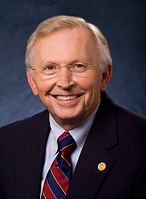Investment Board, WARF launch $30 million venture fund to target early-stage companies
The State of Wisconsin Investment Board and Wisconsin Alumni Research Foundation are creating an early-stage venture capital fund focused on information technology.

Gulbrandsen
Called 4490 Ventures, a reference to the 44ᴼ N latitude and 90ᴼ W longitude lines that approximate the center of the state of Wisconsin, the $30 million fund will focus on early-stage companies primarily in Wisconsin. The private fund, capitalized jointly by SWIB and WARF, is intended to generate attractive returns and build value for state retirement fund participants and WARF’s primary beneficiary, the University of Wisconsin–Madison.
Carl Gulbrandsen, WARF’s managing director, said work on the fund has been underway for more than a year and involved significant staff effort from both organizations as well as independent research to help define the fund’s focus and scope.
“WARF has recognized for some time that there is a significant opportunity in Madison and other regions of the state in information technology startup companies, but experienced venture management and funding for such companies has been lagging our peer states,” Gulbrandsen said. “We appreciate the opportunity to work with SWIB on this effort and we all agree there are some excellent investment opportunities here.”
Michael Williamson, SWIB executive director, said the fund will build upon the partners’ previous success with startups in a variety of industries.
“We are pleased to be able to launch this effort with WARF and believe that together, we have the ingredients necessary for success,” Williamson said. “Our previous experience has proven that early-stage investments can play a valuable role by diversifying our portfolio.”
“Make no mistake about it. We are creating this fund to make money for our participants in the Wisconsin Retirement System.”
Michael Williamson
Regarding the rationale behind the investment, Williamson said, “Make no mistake about it. We are creating this fund to make money for our participants in the Wisconsin Retirement System.”
Gulbrandsen said the market research helped confirm the value of information technology being developed here and highlighted the strength of Wisconsin’s IT workforce skills. However, capturing value from IT innovations may call for an approach different from the licensing activity used in other industries because young IT companies may not rely on patentable technology.
As a result, an important way to capture returns and create value is to invest in the companies themselves. Williamson noted there is industry consensus regarding the need for seed-stage funding in the $500,000 to $2 million range for the kinds of companies the new fund will target.
The technologies involved might include, but not be limited to, data management, informatics, data storage, social grid computing, hardware, new materials, software, mobile technology security and health care information technology, such as the operating systems for medical devices or patient record keeping.
“We hope that the establishment of this fund will bring attention to the many investment opportunities that exist in this state,” Gulbrandsen said. “Past experience has shown that these types of funds often attract the talent, capital and resources necessary to create high-performing startup companies. Given the consistent top-10 ranking of UW–Madison’s computer sciences department and the high-quality work going on at other state campuses and companies, we know there are plenty of excellent ideas here.”
SWIB and WARF have retained a recruiting firm that specializes in private markets investment professionals to conduct a nationwide search for a qualified fund manager with operational experience.




